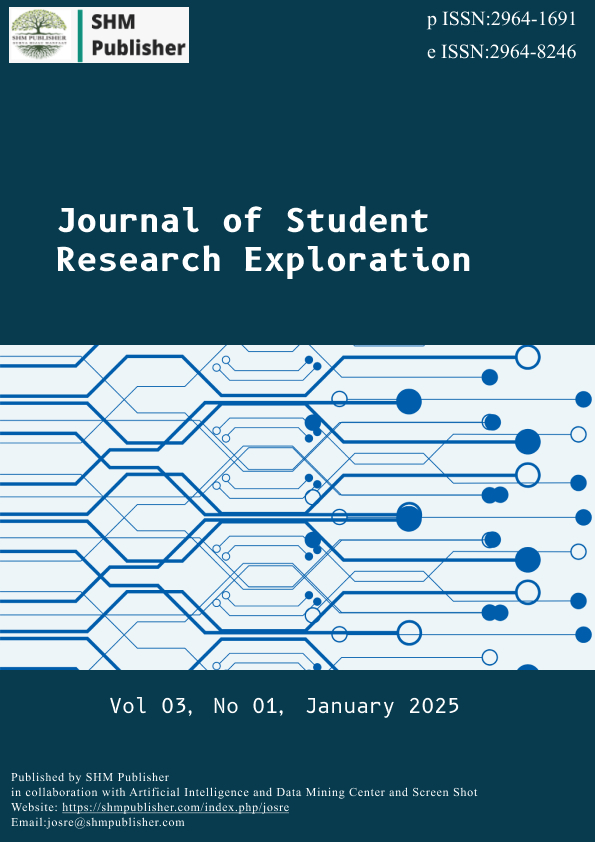Comparison of naïve bayes and support vector machine methods for jkt48 music video comment classification
Main Article Content
Abstract
The research was conducted to discuss the classification of comments on music video JKT48 "Magic Hour" in YouTube using method Naive Bayes Classifier (NBC) and Support Vector Machine (SVM). YouTube monitors viewer emotion by adjective comments Adjectives are the descriptive powers of human communication we use to help personify how different types, i.e. different "personalities" flavors and depths reflect artistic expressions The place where interactivity meets with digital marketing signifying a shared contribution to music lore In this work, we study the comparison of The Support Vector Machine (SVM) and Naive Bayes Classifier in terms of Accuracy, Precision & Recall. This Project includes data pre-processing, collecting the data by YouTube API and build classification models which involves Support Vector Machine and Naive Bayes Classifier. SVM displayed more stable performance than NBC, showing consistent results across different data split ratios. SVM achieved its highest accuracy of 93.42% at an 80:20 ratio, with precision and recall rates reaching 92.57% and 93.42%, respectively.
Article Details

This work is licensed under a Creative Commons Attribution-ShareAlike 4.0 International License.
References
S. Sarkar, “The Role of Information and Communication Technology (ICT) in Higher Education for the 21st Century,” Sci. Probe, vol. 1, Jan. 2012.
A. Shoufan and F. Mohamed, “YouTube and Education: A Scoping Review,” IEEE Access, vol. 10, pp. 125576–125599, 2022, doi: 10.1109/ACCESS.2022.3225419.
A. Toleuzhan, G. Sarzhanova, S. Romanenko, E. Uteubayeva, and G. Karbozova, “The Educational Use of YouTube Videos in Communication Fluency Development in English: Digital Learning and Oral Skills in Secondary Education,” Int. J. Educ. Math. Sci. Technol., vol. 11, no. 1, pp. 198–221, Nov. 2022, doi: 10.46328/ijemst.2983.
M. Kyaw Sein, “Information and Communication Technology for Development (ICT4D),” Inf. Soc., vol. 35, no. 2, pp. 107–108, Mar. 2019, doi: 10.1080/01972243.2019.1568715.
R. Duffett, D.-M. Petroșanu, I.-C. Negricea, and T. Edu, “Effect of YouTube Marketing Communication on Converting Brand Liking into Preference among Millennials Regarding Brands in General and Sustainable Offers in Particular. Evidence from South Africa and Romania,” Sustainability, vol. 11, no. 3, p. 604, Jan. 2019, doi: 10.3390/su11030604.
S. Mulyani and R. Novita, “Implementation Of The Naive Bayes Classifier Algorithm For Classification Of Community Sentiment About Depression On Youtube,” J. Tek. Inform., vol. 3, no. 5, pp. 1355–1361, Oct. 2022, doi: 10.20884/1.jutif.2022.3.5.374.
M. Subramanian, V. E. Sathishkumar, K. Shanmugavadivel, P. Deva, S. Haris, and J. Cho, “Detecting homophobic and transphobic texts from youtube comments using machine learning models,” Appl. Comput. Eng., vol. 6, no. 1, pp. 952–961, Jun. 2023, doi: 10.54254/2755-2721/6/20230958.
Ahlida Nikmatul H, Didih Rizki C, and Christian S.K. Aditya, “Classification of Bullying Comments on YouTube Streamer Comment Sections Using Naïve Bayes Classification,” J. Syst. Eng. Inf. Technol., vol. 2, no. 1, pp. 25–28, Mar. 2023, doi: 10.29207/joseit.v2i1.5016.
H. Valpadasu, P. Chakri, P. Harshitha, and P. Tarun, “Machine Learning based Spam Comments Detection on YouTube,” in 2023 7th International Conference on Intelligent Computing and Control Systems (ICICCS), May 2023, pp. 1234–1239. doi: 10.1109/ICICCS56967.2023.10142608.
D. A. Musleh et al., “Arabic Sentiment Analysis of YouTube Comments: NLP-Based Machine Learning Approaches for Content Evaluation,” Big Data Cogn. Comput., vol. 7, no. 3, p. 127, Jul. 2023, doi: 10.3390/bdcc7030127.
S. U. Ahsaan, H. Kaur, A. K. Mourya, and S. Naaz, “A Hybrid Support Vector Machine Algorithm for Big Data Heterogeneity Using Machine Learning,” Symmetry (Basel)., vol. 14, no. 11, p. 2344, Nov. 2022, doi: 10.3390/sym14112344.
S. Sudianto, J. A. A. Masheli, N. Nugroho, R. W. Ananda Rumpoko, and Z. Akhmad, “Comparison of Support Vector Machines and K-Nearest Neighbor Algorithm Analysis of Spam Comments on Youtube Covid Omicron,” J. Tek. Inform., vol. 15, no. 2, pp. 110–118, Dec. 2022, doi: 10.15408/jti.v15i2.24996.
A. Wijayanto, “Analisis Sentimen Komentar Youtube Mengenai Vaksin Covid-19 Menggunakan Support Vector Machine,” J. PILAR Teknol. J. Ilm. Ilmu Ilmu Tek., vol. 7, no. 1, pp. 24–31, Jun. 2022, doi: 10.33319/piltek.v7i1.118.
A. Sinhal and M. Maheshwari, “An Extensive Review on Contemporary Analysis of Comment Filtration of YouTube Videos Using Machine Learning Techniques,” Int. J. Emerg. Technol. Adv. Eng., vol. 12, no. 9, pp. 130–143, Sep. 2022, doi: 10.46338/ijetae0922_14.
M. B. Puneeth and V. Ramakrishnan, “The Mechanism of Spam Comment Detection Using Count Vectorizer and Naive Bayes Machine Learning Algorithms in Python,” ECS Trans., vol. 107, no. 1, pp. 13417–13428, Apr. 2022, doi: 10.1149/10701.13417ecst.
D. Maulina and M. Corry Andhara, “Perbandingan Pre-Processing Opini Netizen Terhadap RUU PKS Menggunakan Algoritma Naive Bayes Classifier,” Smart Comp Jurnalnya Orang Pint. Komput., vol. 12, no. 1, Jan. 2023, doi: 10.30591/smartcomp.v12i1.4610.
K. Maharana, S. Mondal, and B. Nemade, “A review: Data pre-processing and data augmentation techniques,” Glob. Transitions Proc., vol. 3, no. 1, pp. 91–99, Jun. 2022, doi: 10.1016/j.gltp.2022.04.020.
D. D. Lewis, “Naive (Bayes) at forty: The independence assumption in information retrieval,” 1998, pp. 4–15. doi: 10.1007/BFb0026666.
I. Rish, “An empirical study of the naive Bayes classifier,” in IIJCAI 2001 workshop on empirical methods in artificial intelligence, 2001, pp. 41–46.
Y. Junaedi, B. N. Sari, and A. S. Y. Irawan, “Sistem Pakar Untuk Diagnosis Hama Pada Tanaman Jambu Air Menggunakan Metode Theorema Bayes,” J. Ilm. Inform., vol. 5, no. 2, pp. 168–178, Dec. 2020, doi: 10.35316/jimi.v5i2.960.
D. Prajarin, “Perbandingan Algoritma Klasifikasi Data Mining Untuk Prediksi Penyakit Kulit,” INFORMAL Informatics J., vol. 1, no. 3, pp. 137–141, 2016.

